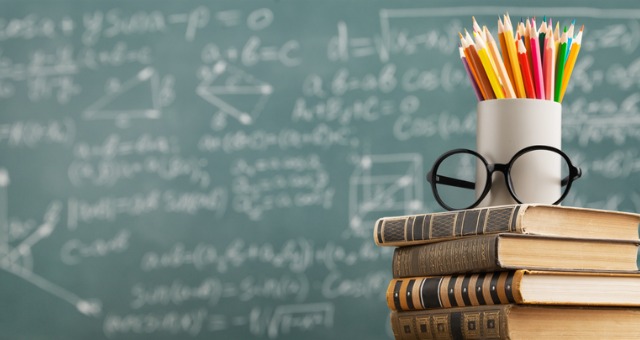Primary Science Tuition Singapore for Building Confidence in Science
Primary Science Tuition Singapore for Building Confidence in Science
Blog Article
A Comprehensive Guide to the Different Discovering Approaches in Main Scientific Research Guideline
The exploration of diverse learning techniques in main science guideline provides an opportunity for instructors to boost trainee involvement and understanding considerably. By checking out hands-on discovering techniques, inquiry-based strategies, and collective strategies, we can recognize efficient techniques that cater to numerous discovering styles.

Hands-On Knowing Methods
Hands-on discovering strategies play a crucial duty in primary science instruction, engaging students in active exploration and experimentation. These approaches permit students to engage straight with phenomena and materials, fostering a deeper understanding of clinical principles. By utilizing manipulatives, versions, and real-life experiments, teachers produce an atmosphere where trainees can observe, hypothesize, and test their concepts.
Such strategies not just improve comprehension but additionally grow vital thinking and analytical skills. When pupils get involved in activities like building simple equipments, growing seeds, or conducting chemical reactions, they are urged to ask concerns and seek solutions with their own monitorings. This experiential technique assists to demystify complicated scientific principles, making them more relatable and easily accessible.
Additionally, hands-on learning promotes partnership among peers, as students often operate in teams to perform experiments or share searchings for. This team effort not only enhances their learning experience however likewise develops crucial social skills. Eventually, incorporating hands-on methods in main science direction fosters a long-lasting love of knowing and curiosity regarding the natural world, laying a solid foundation for future scholastic searches in science and past.
Inquiry-Based Learning
Inquiry-based understanding is an educational approach that motivates pupils to ask questions, check out sensations, and construct their very own understanding of clinical concepts. This technique changes the focus from typical teacher-led instruction to a much more student-centered experience, where students take the campaign in their educational journey. By cultivating inquisitiveness, inquiry-based knowing advertises deeper interaction with the material, permitting students to check out subjects in a purposeful context.
In technique, this approach typically involves hands-on experiments, monitorings, and essential thinking activities that align carefully with the scientific technique. Trainees are urged to create theories, style examinations, and examine information, which grows crucial abilities such as problem-solving and analytical thinking. The duty of the teacher in this structure is to assist in expedition, assisting trainees with the query process while motivating independent thought and partnership.
Additionally, inquiry-based understanding supports a feeling of possession over the discovering process, inspiring trainees to pursue knowledge actively. This approach not just enhances understanding of clinical principles yet additionally promotes a lifelong love for knowing, gearing up students with the abilities essential to browse an increasingly complex globe.
Collaborative Discovering Approaches
Collective knowing approaches encourage students to participate in significant communications with peers, promoting a shared obligation for their educational end results. In primary scientific research instruction, these approaches motivate students to interact to discover scientific principles, resolve troubles, and conduct experiments (primary science tuition Singapore). By joining group tasks, pupils can take advantage of varied perspectives, permitting richer understanding and retention of scientific expertise
One secret facet of collaborative discovering is the emphasis on communication abilities. Students need to express their thoughts, pay attention actively to others, and bargain ideas, all of which are essential competencies in both real-world and scholastic contexts. This social communication not only improves their understanding of clinical concepts but additionally promotes team effort More hints and problem resolution skills.
Furthermore, collective understanding frequently causes raised motivation and engagement. They are much more most likely to take possession of their discovering trip when pupils see the worth of their payments within a team. Educators can promote this procedure deliberately organized team jobs that straighten with educational program objectives while providing support on reliable cooperation techniques. In general, integrating collective understanding approaches in primary science guideline grows a vibrant learning setting that prepares pupils for future scholastic and social difficulties.
Technology Assimilation in Scientific Research
The integration of technology in main science guideline boosts discovering experiences by providing cutting-edge devices and sources that support numerous mentor techniques, consisting of collaborative understanding - primary science tuition Singapore. Making use of digital systems, simulations, and interactive applications allows pupils to engage deeply with scientific concepts, facilitating an extra hands-on method to understanding
Online laboratories, as an example, enable students to conduct experiments securely and efficiently, promoting inquiry-based understanding. These tools can imitate real-world scientific circumstances, allowing pupils to visualize complicated procedures that would be hard to replicate in a traditional class setting. Moreover, innovation cultivates interaction and partnership amongst students, as they can share findings and collaborate on jobs through on visit this web-site the internet platforms.
In addition, multimedia discussions and educational videos can enhance lessons by accommodating varied learning designs, making abstract principles more easily accessible. Information evaluation devices also empower students to gather and translate clinical information, enhancing vital assuming abilities. On the whole, the strategic incorporation of innovation in main science direction not only improves interaction but likewise prepares trainees for a technically sophisticated society, furnishing them with necessary abilities for future scientific ventures.
Distinguished Direction Techniques
Distinguished instruction techniques are important for dealing with the diverse needs of students in main science education. These strategies make it possible for instructors to customize their mentor methods to accommodate differing capabilities, rate of interests, and learning designs within the class. By utilizing differentiated instruction, educators can produce an inclusive setting that promotes interaction and enhances understanding of clinical ideas.
One effective strategy is to make use of flexible organizing, which enables students to team up with peers at similar ability levels or with varying point of views. This approach urges peer knowing and advertises important thinking. In addition, providing selections in tasks can empower pupils, allowing them to pick projects that reverberate with their interests while still fulfilling curricular objectives.
In addition, incorporating tiered jobs is another useful technique. By creating tasks with varying degrees of complexity, teachers can make certain that all students are suitably tested, regardless of their effectiveness. Utilizing formative analyses to gauge comprehending more enables instructors to readjust their instructional methods dynamically, making certain that each learner receives the assistance they require.
Inevitably, executing separated guideline techniques in key science education not only improves trainee understanding outcomes but likewise grows an enthusiasm for scientific research, preparing pupils for future academic pursuits.

Verdict
In summary, efficient main scientific research direction demands a complex technique that includes hands-on understanding, inquiry-based techniques, and joint methods. The integration of technology visite site and distinguished guideline further caters to varied knowing styles, fostering an environment conducive to expedition and vital thinking.
The expedition of diverse knowing techniques in primary science instruction provides a chance for teachers to boost student involvement and comprehension substantially.Hands-on discovering methods play a crucial duty in main science guideline, involving trainees in active exploration and experimentation.Inquiry-based discovering is an instructional approach that encourages students to ask questions, examine phenomena, and construct their own understanding of clinical principles.Joint discovering techniques equip students to engage in purposeful communications with peers, cultivating a common obligation for their educational outcomes. On the whole, including collective knowing approaches in key scientific research direction cultivates a dynamic learning setting that prepares trainees for future academic and social obstacles.
Report this page